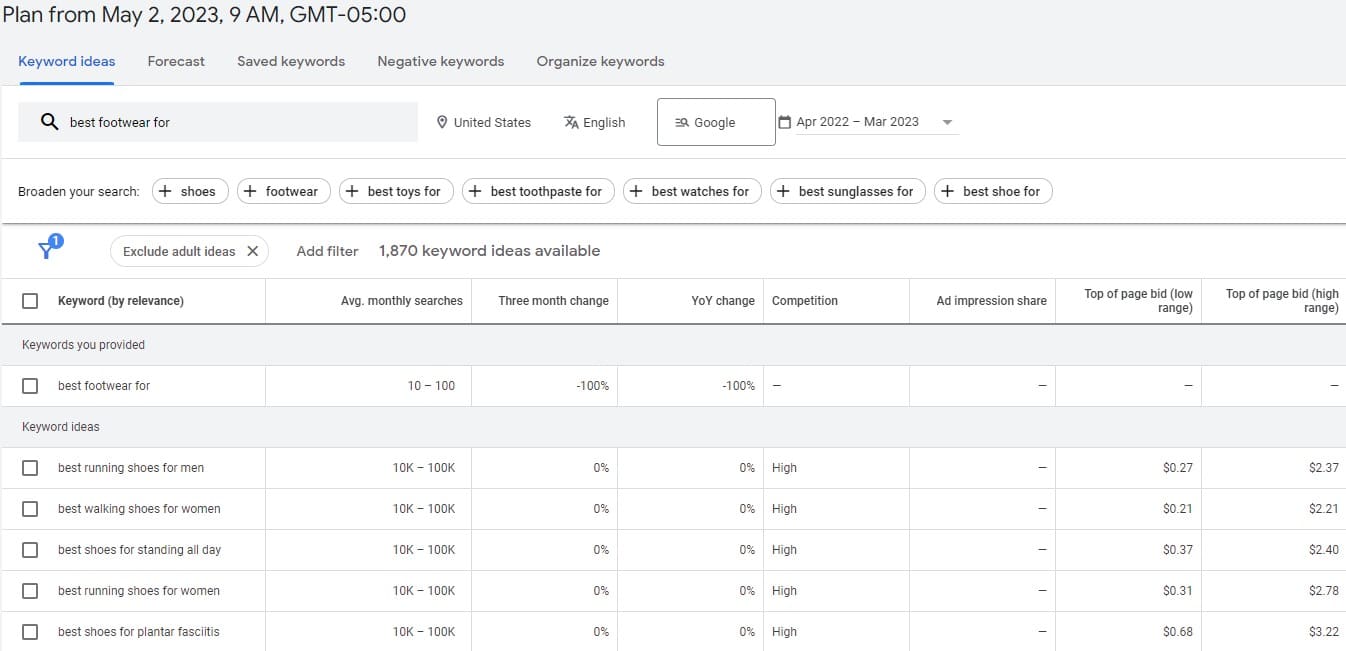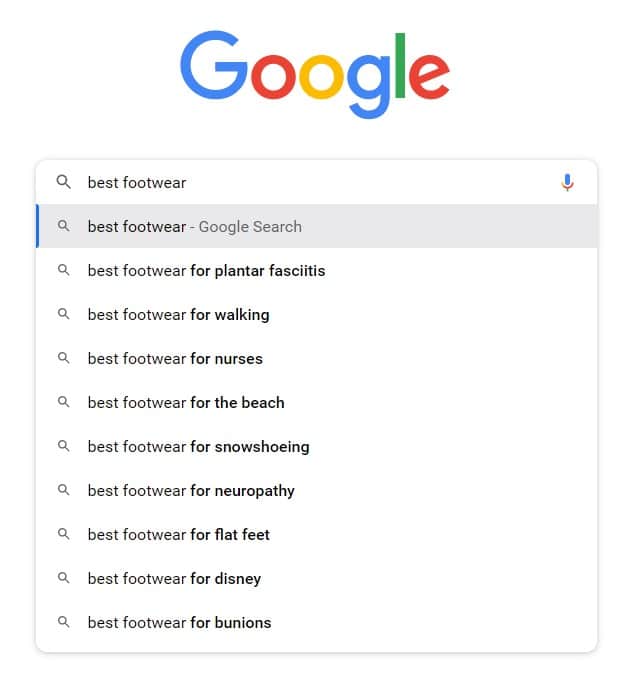Get ready to skyrocket your eCommerce store’s search engine rankings with the secret weapon you never knew you needed: long-tail keywords! But wait, what exactly are these game-changing phrases?
Introduction to Long-Tail Keywords
Long-tail keywords are highly-specific, low-competition search terms that usually contain three or more words.
Some examples of long-tail keywords are:
- “Eco-friendly kitchen utensils shop”
- “Personalized engraved gift ideas”
- “Best footwear for the beach”
- “Affordable sustainable fashion brands”
Long-tail keywords like these are invaluable for eCommerce businesses as they help capture highly targeted traffic, leading to increased conversion rates and improved search engine rankings.
The Benefits of Targeting Long-Tail Keywords
Higher Conversion Rates
Long-tail keywords often signal a user’s intent to make a purchase or find a solution to a specific problem.
By targeting these keywords, you’re more likely to attract visitors who are further along in the buying process, resulting in higher conversion rates.
Lower Competition
As long-tail keywords are more specific, they typically have less competition compared to broader keywords.
This means it’s easier to rank highly in search engine results and capture a larger share of the targeted traffic.
Improved Search Engine Rankings
Focusing on long-tail keywords can help improve your website’s overall search engine rankings.
By creating high-quality content that addresses the needs of users searching for these keywords, you’ll build trust with search engines, making it more likely that your site will rank highly for both long-tail and broader search terms.
How to Research and Identify Long-Tail Keywords
Use Keyword Research Tools

Keyword research tools like Google Keyword Planner, Moz Keyword Explorer, and SEMrush can help you uncover long-tail keyword opportunities.
By inputting your seed keywords, you can discover related long-tail search queries that users are searching for.
Analyze Competitor Keywords
Investigate the keywords your competitors are targeting by using tools like Ahrefs or SpyFu.
Identifying the long-tail keywords that drive traffic to their sites can help you refine your keyword strategy, as we at LuccaAM often do for our clients.
Leverage Google Autocomplete and Related Searches

Google Autocomplete and Related Searches features are valuable resources for finding long-tail keyword ideas.
Type your seed keyword into the search bar and take note of the suggestions that appear.
These suggestions are based on actual search queries, making them relevant and useful for your keyword research.
Integrating Long-Tail Keywords in Your eCommerce Content Strategy
Create Comprehensive Product Pages
Optimize your product pages by including relevant long-tail keywords in the title, URL, meta description, image alt text, and throughout the product description.
Ensure that your content is user-focused and provides detailed information about the product’s features, benefits, and specifications.
Develop Informative Blog Posts
Publishing high-quality, informative blog posts that target long-tail keywords can help you rank higher in search engine results and drive targeted traffic to your eCommerce site.
Focus on creating content that answers specific questions, provides helpful tips, or offers valuable insights related to your niche (or have our exceptional team at LuccaAM do this for you!).
Utilize FAQs and Q&A Sections
Adding a Frequently Asked Questions (FAQ) or Q&A section to your product pages or blog posts can help you target long-tail keywords naturally.
These sections allow you to provide detailed answers to common questions that users might have, which can improve your site’s relevance and trustworthiness in the eyes of search engines.
Tracking and Optimizing Your Long-Tail Keyword Performance
Monitor Your Keyword Rankings
Use keyword tracking tools like SERPWatcher or Rank Tracker to monitor your site’s performance for specific long-tail keywords.
![]()
By regularly tracking your rankings, you can identify opportunities for improvement and adjust your content strategy accordingly.
Analyze User Engagement Metrics
Utilize Google Analytics or other web analytics tools to examine user engagement metrics such as bounce rate, time on page, and pages per session.
These metrics can help you determine if your long-tail keyword-targeted content is resonating with your audience and meeting their needs.
If you notice any areas of concern, refine your content to better address the search intent behind the long-tail keywords.
Conduct A/B Testing
A/B testing, or split testing, can help you optimize your eCommerce site by comparing two versions of a webpage or element to determine which performs better.
Test variations of your headlines, product descriptions, and calls to action to identify the most effective approach for targeting long-tail keywords and driving conversions.
Review and Update Your Content Regularly
Search engine algorithms and user preferences evolve over time, so it’s crucial to review and update your content regularly.
Periodically analyze your long-tail keyword-targeted content to ensure it remains accurate, relevant, and valuable to your audience.
This ongoing optimization process will help you maintain high search engine rankings and continue to attract targeted traffic.
Conclusion
Long-tail keywords are essential for eCommerce success, as they help you capture highly targeted traffic, increase conversion rates, and improve search engine rankings.
By conducting thorough keyword research, creating valuable content that addresses user intent, and continuously monitoring and optimizing your keyword performance, you can leverage long-tail keywords to drive sustainable growth for your eCommerce business.
With the guidance of experts like our team at LuccaAM, you’ll be well on your way to eCommerce success.
Frequently Asked Questions
What are some examples of long-tail keywords?
Examples of long-tail keywords include “organic cotton baby clothes,” “gluten-free chocolate chip cookies,” and “vegan leather backpack for travel.”
How often should I update my long-tail keywords strategy?
It’s essential to periodically review your long-tail keywords strategy to stay current with industry trends and user behavior. Consider updating your strategy every 3-6 months or as needed based on your performance metrics.
Can I target multiple long-tail keywords on one product page?
Yes, you can target multiple long-tail keywords on a single product page, but ensure they are closely related and relevant to the content. Overstuffing keywords can lead to a negative user experience and harm your SEO efforts.
How do I know if my long-tail keywords are working?
Monitor your website’s organic traffic, CTR, and conversion rates to gauge the effectiveness of your long-tail keywords. If you see improvements in these metrics, your long-tail keyword strategy is likely working.
Can long-tail keywords improve my website’s domain authority?
While long-tail keywords can contribute to improving your website’s overall SEO, domain authority is influenced by various factors such as backlinks, content quality, and site structure. However, targeting long-tail keywords can make your content more relevant and valuable, which may indirectly contribute to higher domain authority.
- SEO Health Check: Ensuring Your Website’s Optimal Performance - July 16, 2024
- SEO for WordPress Websites: The Essentials - June 28, 2024
- SEO for New Websites: A Quick Start Guide - June 19, 2024
